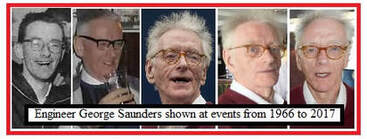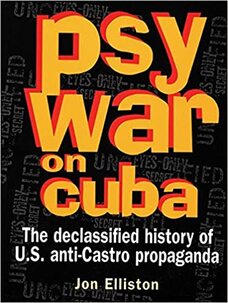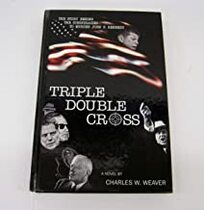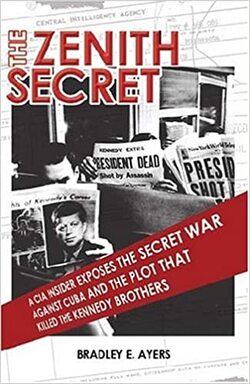|
Prince Charles explains 'pebble theatre'.
|
PEBBLE
|
|
Don Pierson [right] explains how a young Prince Charles made a request to join the Radio London fan club. |
|
|
Prince Charles explains 'pebble theatre'.
|
PEBBLE
|
|
Don Pierson [right] explains how a young Prince Charles made a request to join the Radio London fan club. |
|
 In 1960, George Saunders has stated that he began his first job with the Marconi company in Chelmsford, just after leaving school. George does not seem to have told anyone a lot of very specific information about himself. Possibly that is our fault and the fault of others who have interviewed him over the years. But until recently this did not seem to be a matter of any great interest. It is now! Along with Howard Spencer, who we have mentioned before and shall do so again very shortly, George Saunders helps us to narrow-down a timeline of events, which no one else appears to have even attempted to do, because the significance of such a timeline did not dawn on them and until very recently, it did now dawn on us, either. First of all we would like to know the actual date when he began his employment with Marconi. Then we would like to know the actual date when he first met John Howard Gilman in a pub at Chelmsford, Essex. After that, we would like to know when he actually gave his notice to quit his job at Marconi, and finally, the actual date that when he first board the mv Mi Amigo to begin his employment when the ship was anchored off Essex and broadcasting under the name of Radio Atlanta. Perhaps some of our readers can fill in these blanks for us?  What we have been able to deduce [see our blog entry for June 30], and based upon all of the evidence that is available to us from a variety of sources, including various recollections by George Saunders himself; we have concluded that he must have stepped off the train from Dublin and on to the Dundalk railway platform sometime after finishing work for the day at Marconi, and his weekend began. If he left work for that week on a Friday evening, and then he immediately departed for Greenore via Dublin; then the date was probably March 13, 1964. Because sunset on that day was at 5:59 PM, and depending upon the actual time that he finished work, most of his journey would have been during darkness, meaning that it would have been a late start on such a journey that he had not undertaken before. However, given that he had to go from Chelmsford, Essex to the airport (probably Heathrow), and then catch a flight to Dublin after which he had to go the Dublin railway station, and then catch a train bound for Belfast from which he was to alight at Dundalk; it is more likely that he arrived on the Dundalk railway platform at some time during the morning of Saturday, March 14, 1964. It is therefore likely that George Saunders stayed at Greenore, until Sunday, March 15, 1964, and we add that note since George is a prudent man, and therefore it seems highly unlikely that he would have quit his job at Marconi, without first obtaining the guarantee of a new job. However, there is another caveat to consider, and that is before he got to Greenore and had a final interview with Alfred Nicholas Thomas on board the mv Mi Amigo docked at Greenore, he did not know for sure that he had the offer of a new job. Therefore we will use the date of Saturday, March 14, 1964 as our baseline from which to build out a timeline which first reverses back in time, and then goes forwards to establish other dates in context. The only way that this dateline could be in error, is if some parts of George Saunders' related story are untrue; but since he has more-or-less told the same story consistently to several people without conflicting information, we have to accept the date of Saturday, March 14, 1964 as being our baseline. Now while there certainly are gaps in the story as told by George Saunders, but there are no conflicting dates of which we are presently aware.  It may, or it may not be a matter of significance that George Saunders does not appear to have made any mention of this event, which received extensive worldwide coverage on both radio and television news bulletins. Because many people in Ireland had both a picture of the Pope and a picture of the slain President hanging on a wall in their homes, and many who were alive at the time remember exactly where they were and what they were doing when JFK was murdered in Dallas, Texas. Therefore, anything to do with his death was being noted and discussed in general conversation, especially in Ireland. Although the guilty verdict handed down against Jack Ruby was later overturned on appeal, Ruby died of cancer before a new trial could take place. But if George had noted where he was when that verdict was handed down, then it would have enabled us to fix a date stamp upon his visit to Greenore. In case you are wondering whether George Saunders was remotely interested in the circumstances surrounding the death of John F. Kennedy, or what any of this has to do with the radio ship at Greenore that he was going to visit and perhaps get a new job, then you should consider the following information provided by George Saunders. Several years ago, Chris Edwards interviewed George Saunders for Offshore Echos magazine, and this is part of the transcript that transpired: Edwards: "Do you know much of the previous history of the Mi Amigo, it was certainly used on Radio Nord. Gordon McLendon had quite an involvement with it. There is the possibility it may have broadcast to Cuba." Saunders: "Now I can tell you a bit about that. Something I came across, the CIA looked at it and this is when it was owned by the two Texas oil millionaires, Thompson and the other chap. What the CIA wanted it for, not as a radio ship at all, they wanted to launch small balloons, carrying propaganda into Cuba. This was the idea and somehow of course it didn’t happen. But I’ve come across the memo concerned in a book called Psychological Warfare on Cuba and it's a collection of documents as published a few years back." We have also spoken repeatedly to George Saunders, and he prompted us to buy the book that he referred to and is illustrated above. The "collection of documents" mentioned by George Saunders are actually declassified Central Intelligence Agency documents that form the basis for the book. There is a reference in one of the documents to a CIA 'Operation Mongoose' meeting that was chaired by the brother of John F. Kennedy. Robert F. Kennedy was wearing two hats. One of them was a visible and nepotistic post as Attorney General of the United States of America. His other hat was invisible to the hoi polloi. More about that 'other hat' in a moment. The "Thompson" referred to by George Saunders, is one one a trio composed of Gordon McLendon; Clint Murchison Jr., and Robert F. Thompson. It was Thompson who had senior management control of the ship that was renamed Mi Amigo.  Thompson's own manager was Charles W. Weaver with whom we have had personal contact, and we still maintain contact to this day with both his widow and daughter. Before Weaver died he wrote a series of manuscripts, and one of them which appears to have been influenced by a ghostwriter after Weaver's death, does not make a lot of sense. But earlier versions of his unpublished manuscripts - some of which we already have - tell an interesting story with some degree of verified credibility. We were about to receive the entire his file just prior to the Virus pandemic making travel difficult.  Part of the Bobby Kennedy plan called for Thompson to bring the Mi Amigo to Galveston island in the Gulf of Mexico where it would be stripped of all broadcasting equipment, and then outfitted with helium balloons. The balloons would be filled on deck with gas and then they would hoist attached propaganda packages high into the sky to be blown over Cuba. Once on station over Cuba, these packages would then be released. Bobby Kennedy was actually running a secret faction of Central Intelligence Agency assets that were based on the southern campus of the University of Miami. His brother JFK, had promised the world that there would be no more invasions of Cuba by the USA. In one sense he sort-of told the truth, but in legal parlance he was lying through his teeth! The mercenary army managed by Robert F. Kennedy, was headed by a Cuban ex-pat and his troops were shipped off shore to countries in Central America, although their banking was still controlled in Miami. So in one sense the USA was not performing any hostile acts via its own people, but indirectly it was financing and facilitating a huge anti-Castro operation. Because of the start of the 'Cuban Missile Crisis' in September 1962, the Mi Amigo (still called Magda Maria at that time), could not leave European waters and cross the Atlantic Ocean because the U.S. Navy was blocking all sea lanes: including those leading to Galveston in the Gulf of Mexico. Mainly for that reason the larger mv Olga Patricia was used in its place. This same CIA ship was later brought to the UK as the home for two more offshore radio stations which were also financed by Texans: Radio England and Britain Radio. On Saturday, March 14, 1964 as George Saunders got off the train at Dundalk, the mv Mi Amigo had secretly slipped out of port on Galveston island, just after the murders of both John F. Kennedy and Lee Harvey Oswald. Now it was tied-up at the waterfront of the disused railway terminus and ferry port at Greenore, located just across the water from the British rump nation called Northern Ireland.
Because the history of how that railway terminus fell into disuse and then came under the control of Ronan O'Rahilly's father, is a segment all by itself. That will be left for explanation until tomorrow's entry in this Blog. [NOTE: This text was both revised and expanded in detail on July 22, 2020.] Comments are closed.
|
Our team produced this free radio program for PCRL in Birmingham.
It was repeatedly broadcast on and after October 20, 1985. Click & listen! Blog Archive
August 2023
Copyright 2021 with all rights reserved.
|
Index |
Library |
|
